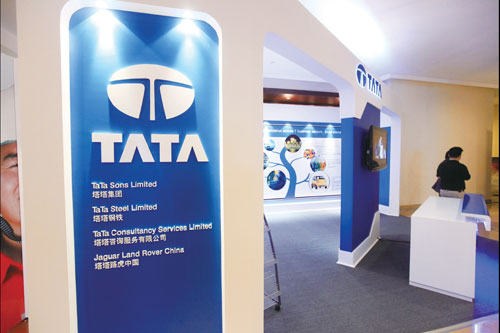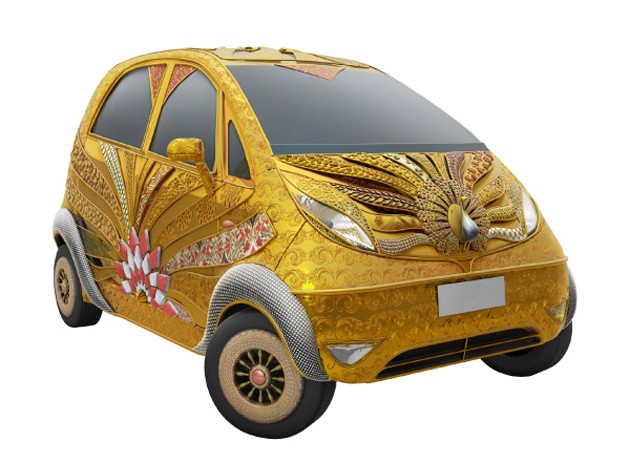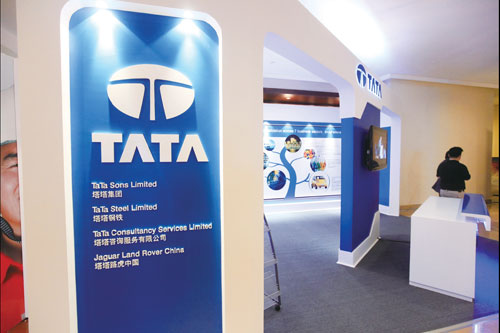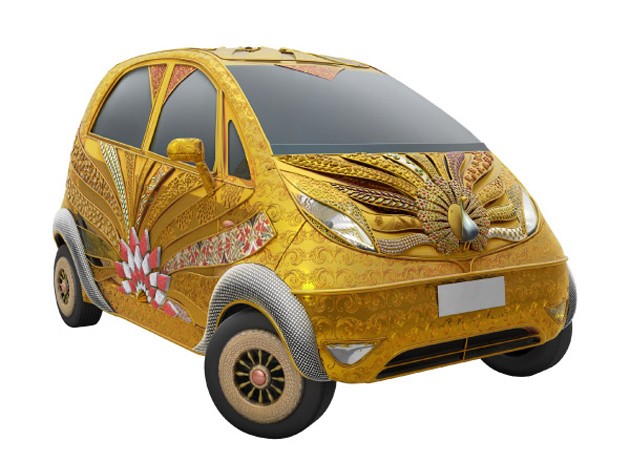 Tata Nano,作为世界上最便宜的汽车,它早在2009年第一家公司减产之前就已经成为一种象征。塔塔(Tata)集团是印度最值得尊敬的企业集团,它把自己炒作为一场改革的化身。节俭的创新理念将给消费者带来前期售价仅2000美元的汽车,这是普通印度和中国民众都可以接受的价位。亚洲的工程师们去除所有多余,把西方的产品加以改造,这样节省了巨大的成本——节俭之风将统治整个世界。Nano将把这股节俭风潮带到印度,正如丰田曾在日本吹起节俭之风一样。
Tata Nano,作为世界上最便宜的汽车,它早在2009年第一家公司减产之前就已经成为一种象征。塔塔(Tata)集团是印度最值得尊敬的企业集团,它把自己炒作为一场改革的化身。节俭的创新理念将给消费者带来前期售价仅2000美元的汽车,这是普通印度和中国民众都可以接受的价位。亚洲的工程师们去除所有多余,把西方的产品加以改造,这样节省了巨大的成本——节俭之风将统治整个世界。Nano将把这股节俭风潮带到印度,正如丰田曾在日本吹起节俭之风一样。
可惜,这款神奇的汽车从出售第一辆起就出现了很多问题。抗议的农民要求Tata汽车公司把生产地迁移到另一个州。早期的销售并没有火,但有些汽车却火了,但是着火的意思。农村地区的消费者对把卡车换成汽车的兴趣不大,Nano在宣传阶段的失败引发了更大的问题。节俭创新的理念是不是宣传得有些过头了?西方公司能袖手旁观吗?
最近的两本新书——《逆向创新》,两位作者分别是Vijay Govindarajan和Chris Trimble,和另一本《Jugaad 创新》,三位作者分别是Navi Radjou, Jaideep Prabhu 和 Simone Ahuja——这两本书说明上面两个问题的答案都是否定的。Govindarajan先生在达特茅斯学院塔克商学院任教,他曾建议GE公司开展节俭创新,并与GE总裁Jeff Immelt(杰弗里•伊梅尔特)以此为主题共同写了一篇开创性的文章。《Jugaad 创新》是针对这个主题最容易理解的一本书(jugaad是印度语,意思是灵光乍现),这本书展示了节俭创新的风潮正在新兴国家之间刮起,尽管领袖并没有同意找另一个词来描述它。他们也激烈争论说它也将改变那些发达国家。
跨国公司首先开始借用新兴世界国家的理念,并把它运用到西方(和新兴国家)。哈曼是美国一家生产汽车娱乐系统的公司,它为新兴市场开发了一种新的系统,称为“Saras”,梵文是“灵活”的意思,这种新系统对设计及印度和中国工程师的要求更加简单。2009年,丰田成为哈曼公司的客户。GE的Vscan是一种手提式的超音波设备,能让医生“看到”患者的体内,这种设备首先在中国开发,目前在富裕和贫穷的国家都很热销。(Immelt先生相信这种设备未来一定会像听诊器一样成为不可缺少的医疗器械。)沃尔玛为与对手竞争,在阿根廷、巴西和墨西哥始创了“袖珍商店”,现在这种理念正在向美国传输。
西方公司普遍的担心是这种战略可能会破坏高昂科技的现有市场。如果花1000美元就能买到一个简单一点的产品,那么为什么还要花10000美元去买同一家公司生产的产品呢?这种想法太悲观了。GE以便宜的心电图在医生群体中开发了一个新市场;以前只有医院才有这个财力。此外,站在原地是不行的。不管西方公司会不会在西方出售简化的商品,亚洲公司都会。
 印度的Mahindra & Mahindra公司(M&M)就向美国的业余农夫销售了很多小型拖拉机,这让美国迪尔公司(John Deere)有些害怕了。中国的海尔公司以低价在很多产品上打败了西方竞争者,从空调、洗衣机到冷酒器,其中海尔销售的冷酒器价格是这个行业领导者的一半。在两年时间内,海尔就已经攫取了美国60%的市场份额。这时候,一些西方公司才开始把目标转向新兴市场,在那里发展它们的产品。一个总部位于马萨诸塞州的新创业公司开发了用于测试邮票大小的纸质诊断器,因为也属于诊断器范畴,于是该公司绕过美国对医疗设备审批程序过慢的情况,选择在发展中国家推销这种理念。
印度的Mahindra & Mahindra公司(M&M)就向美国的业余农夫销售了很多小型拖拉机,这让美国迪尔公司(John Deere)有些害怕了。中国的海尔公司以低价在很多产品上打败了西方竞争者,从空调、洗衣机到冷酒器,其中海尔销售的冷酒器价格是这个行业领导者的一半。在两年时间内,海尔就已经攫取了美国60%的市场份额。这时候,一些西方公司才开始把目标转向新兴市场,在那里发展它们的产品。一个总部位于马萨诸塞州的新创业公司开发了用于测试邮票大小的纸质诊断器,因为也属于诊断器范畴,于是该公司绕过美国对医疗设备审批程序过慢的情况,选择在发展中国家推销这种理念。
全世界的企业家都在想方设法最大程度地降低成本。Zack Rosenburg和Liz McCartney在重新思考直接从地面开始建造房子的方法;他们希望把成本降低15%,工程时间减少30%。Vivian Fonseca参与了一项系统研究,该系统试图通过给贫穷和上了年纪的糖尿病患者发送短消息的方式帮助他们控制病情。Jane Chen是Embrace公司的老板,他在美国和几个新兴市场销售成本低廉的早产婴儿所需的保温箱。
这种趋势一定会继续扩大。随着中产阶级不断被剥削,政府控制开支,西方世界注定要经历一场长时间的紧缩。目前,美国有5000万人没有医疗保险;6000万人没有普通的银行账户。这些人疾呼能够储蓄的新方法。越来越多的西方大学把节俭熟记于心(至少当这些校方工作人员考虑除学费以外的事情时是这样的)。圣塔克拉拉大学(Santa Clara University)有一个节俭创新实验室;斯坦福大学有一个针对特困生的企业设计项目(名字听起来不节俭);剑桥大学有一个融合设计项目;甚至奥巴马政府也有一个社会创新与全民参与办公室,以鼓励医疗和能源产业的草根企业家们。
 用节俭回应节俭
用节俭回应节俭
全球化正在迫使西方企业创造出更多的价值才能赚钱。Logitech是一家美国公司,它不得不开发出一种价位最低的高级无线鼠标,才能与中国的Rapoo公司竞争。John Deere公司与印度的M&M公司在小型拖拉机上竞争时也要面临同样的情况。与此同时,全球化给予了西方公司更多的工具,其中一些正在新兴国家建造创新中心。例如,百事公司2010年就建了一个。西方公司照着旧方法在全球的人才库中寻找愿意为自己效劳的人。雷诺-日产(Renault-Nissan)公司让其在法国、印度和日本的工程师互相竞争看谁能更好地降低成本,结果胜利的是印度¬¬¬¬工程师。Tata Nano也许不会改变世界,但节俭创新将改变世界。
 THE Tata Nano, the world’s cheapest car, became a symbol before the first one rolled off the production line in 2009. The Tata group, India’s most revered conglomerate, hyped it as the embodiment of a revolution. Frugal innovation would put consumer products, of which a $2,000 car was merely a foretaste, within reach of ordinary Indians and Chinese. Asian engineers would reimagine Western products with all the unnecessary frills stripped out. The cost savings would be so huge that frugal ideas would conquer the world. The Nano would herald India’s arrival just as the Toyota once heralded Japan’s.
THE Tata Nano, the world’s cheapest car, became a symbol before the first one rolled off the production line in 2009. The Tata group, India’s most revered conglomerate, hyped it as the embodiment of a revolution. Frugal innovation would put consumer products, of which a $2,000 car was merely a foretaste, within reach of ordinary Indians and Chinese. Asian engineers would reimagine Western products with all the unnecessary frills stripped out. The cost savings would be so huge that frugal ideas would conquer the world. The Nano would herald India’s arrival just as the Toyota once heralded Japan’s.
Alas, the miracle car was dogged with problems from the first. Protesting farmers forced Tata Motors to move production out of one Indian state and into another. Early sales failed to catch fire, but some of the cars did, literally. Rural customers showed little desire to shift from trucks to cars. The Nano’s failure to live up to the hype raises a bigger question. Is frugal innovation being oversold? Can Western companies relax?
Two new books—“Reverse Innovation” by Vijay Govindarajan and Chris Trimble, and “Jugaad Innovation” by Navi Radjou, Jaideep Prabhu and Simone Ahuja—suggest that the answer to both questions is No. Mr Govindarajan, of the Tuck Business School at Dartmouth College, has advised General Electric on frugal innovation and co-written a path-breaking article on the subject with GE’s boss, Jeff Immelt. “Jugaad Innovation” is the most comprehensive book yet to appear on the subject (jugaad is a Hindi word meaning a clever improvisation). The books show that frugal innovation is flourishing across the emerging world, despite the gurus’ failure to agree on a term to describe it. They also argue convincingly that it will change rich countries, too.
Multinationals are beginning to take ideas developed in (and for) the emerging world and deploy them in the West. Harman, an American company that makes infotainment systems for cars, developed a new system for emerging markets, dubbed “Saras”, the Sanskrit word for “flexible”, using a simpler design and Indian and Chinese engineers. In 2009 Harman enrolled Toyota as a customer. GE’s Vscan, a portable ultrasound device that allows doctors to “see” inside patients, was developed in China and is now a hit in rich and poor countries alike. (Mr Immelt believes that these devices will become as indispensable as stethoscopes.) Walmart, which created “small mart stores” to compete in Argentina, Brazil and Mexico, is reimporting the idea to the United States.
The standard worry among Western firms is that this strategy will cannibalise the existing market for expensive technology. Why buy a $10,000 device if the same firm makes a slightly simpler one for $1,000? This is too pessimistic. GE opened up a new market among doctors for its cheap electrocardiograms; previously only hospitals could afford the things. Besides, standing still is not an option. Whether or not Western firms sell frugal products in the West, Asian firms will.
 India’s Mahindra & Mahindra sells lots of small tractors to American hobby farmers, filling John Deere with fear. China’s Haier has undercut Western competitors in a wide range of products, from air conditioners and washing machines to wine coolers. Haier sold a wine cooler for half the price of the industry leader. Within two years, it had grabbed 60% of the American market. Some Western companies are turning to emerging markets first to develop their products. Diagnostics for All, a Massachusetts-based start-up that has developed paper-based diagnostic tests the size of a postage stamp, chose to commercialise its idea in the developing world so as to circumvent America’s hideously slow approval process for medical devices.
India’s Mahindra & Mahindra sells lots of small tractors to American hobby farmers, filling John Deere with fear. China’s Haier has undercut Western competitors in a wide range of products, from air conditioners and washing machines to wine coolers. Haier sold a wine cooler for half the price of the industry leader. Within two years, it had grabbed 60% of the American market. Some Western companies are turning to emerging markets first to develop their products. Diagnostics for All, a Massachusetts-based start-up that has developed paper-based diagnostic tests the size of a postage stamp, chose to commercialise its idea in the developing world so as to circumvent America’s hideously slow approval process for medical devices.
Entrepreneurs everywhere are seizing on the idea of radical cost-cutting. Zack Rosenburg and Liz McCartney are rethinking house-building from the ground up; they hope to reduce the cost by 15% and the construction time by 30%. Vivian Fonseca collaborated in the development of a system for sending SMS messages to poor and elderly diabetics to help them control their disease. Jane Chen, the boss of Embrace, sells low-cost infant warmers for premature babies in America and several emerging markets.
This trend will surely accelerate. The West is doomed to a long period of austerity, as the middle class is squeezed and governments curb spending. Some 50m Americans lack medical insurance; 60m lack regular bank accounts. Such people are crying out for new ways to save money. A growing number of Western universities are taking the frugal message to heart (at least when it comes to thinking about things other than their own tuition fees). Santa Clara University has a Frugal Innovation Lab. Stanford University has an (unfrugally named) Entrepreneurial Design for Extreme Affordability programme. Cambridge University has an Inclusive Design programme. Even the Obama administration has an Office of Social Innovation and Civic Participation to encourage grassroots entrepreneurs in health care and energy.
Fighting frugality with frugality
Globalisation is forcing Western firms to provide more value for money. Logitech, an American firm, had to create a top-class wireless mouse for bottom-of-the-range prices when it took on Rapoo, a Chinese company, in China. John Deere had to do the same with its small tractors when it took on Mahindra in India. At the same time, globalisation gives Western firms more tools. Some are building innovation centres in the emerging world. PepsiCo, for example, established one in India in 2010. Some Western firms routinely fish in a global brain pool. Renault-Nissan asked its engineers in France, India and Japan to compete to come up with ideas for cutting costs. The Indians won. The Tata Nano may not have changed the world, but frugal innovation will.
 Tata Nano,作为世界上最便宜的汽车,它早在2009年第一家公司减产之前就已经成为一种象征。塔塔(Tata)集团是印度最值得尊敬的企业集团,它把自己炒作为一场改革的化身。节俭的创新理念将给消费者带来前期售价仅2000美元的汽车,这是普通印度和中国民众都可以接受的价位。亚洲的工程师们去除所有多余,把西方的产品加以改造,这样节省了巨大的成本——节俭之风将统治整个世界。Nano将把这股节俭风潮带到印度,正如丰田曾在日本吹起节俭之风一样。
Tata Nano,作为世界上最便宜的汽车,它早在2009年第一家公司减产之前就已经成为一种象征。塔塔(Tata)集团是印度最值得尊敬的企业集团,它把自己炒作为一场改革的化身。节俭的创新理念将给消费者带来前期售价仅2000美元的汽车,这是普通印度和中国民众都可以接受的价位。亚洲的工程师们去除所有多余,把西方的产品加以改造,这样节省了巨大的成本——节俭之风将统治整个世界。Nano将把这股节俭风潮带到印度,正如丰田曾在日本吹起节俭之风一样。
 印度的Mahindra & Mahindra公司(M&M)就向美国的业余农夫销售了很多小型拖拉机,这让美国迪尔公司(John Deere)有些害怕了。中国的海尔公司以低价在很多产品上打败了西方竞争者,从空调、洗衣机到冷酒器,其中海尔销售的冷酒器价格是这个行业领导者的一半。在两年时间内,海尔就已经攫取了美国60%的市场份额。这时候,一些西方公司才开始把目标转向新兴市场,在那里发展它们的产品。一个总部位于马萨诸塞州的新创业公司开发了用于测试邮票大小的纸质诊断器,因为也属于诊断器范畴,于是该公司绕过美国对医疗设备审批程序过慢的情况,选择在发展中国家推销这种理念。
印度的Mahindra & Mahindra公司(M&M)就向美国的业余农夫销售了很多小型拖拉机,这让美国迪尔公司(John Deere)有些害怕了。中国的海尔公司以低价在很多产品上打败了西方竞争者,从空调、洗衣机到冷酒器,其中海尔销售的冷酒器价格是这个行业领导者的一半。在两年时间内,海尔就已经攫取了美国60%的市场份额。这时候,一些西方公司才开始把目标转向新兴市场,在那里发展它们的产品。一个总部位于马萨诸塞州的新创业公司开发了用于测试邮票大小的纸质诊断器,因为也属于诊断器范畴,于是该公司绕过美国对医疗设备审批程序过慢的情况,选择在发展中国家推销这种理念。
 用节俭回应节俭
用节俭回应节俭

 THE Tata Nano, the world’s cheapest car, became a symbol before the first one rolled off the production line in 2009. The Tata group, India’s most revered conglomerate, hyped it as the embodiment of a revolution. Frugal innovation would put consumer products, of which a $2,000 car was merely a foretaste, within reach of ordinary Indians and Chinese. Asian engineers would reimagine Western products with all the unnecessary frills stripped out. The cost savings would be so huge that frugal ideas would conquer the world. The Nano would herald India’s arrival just as the Toyota once heralded Japan’s.
THE Tata Nano, the world’s cheapest car, became a symbol before the first one rolled off the production line in 2009. The Tata group, India’s most revered conglomerate, hyped it as the embodiment of a revolution. Frugal innovation would put consumer products, of which a $2,000 car was merely a foretaste, within reach of ordinary Indians and Chinese. Asian engineers would reimagine Western products with all the unnecessary frills stripped out. The cost savings would be so huge that frugal ideas would conquer the world. The Nano would herald India’s arrival just as the Toyota once heralded Japan’s.
 India’s Mahindra & Mahindra sells lots of small tractors to American hobby farmers, filling John Deere with fear. China’s Haier has undercut Western competitors in a wide range of products, from air conditioners and washing machines to wine coolers. Haier sold a wine cooler for half the price of the industry leader. Within two years, it had grabbed 60% of the American market. Some Western companies are turning to emerging markets first to develop their products. Diagnostics for All, a Massachusetts-based start-up that has developed paper-based diagnostic tests the size of a postage stamp, chose to commercialise its idea in the developing world so as to circumvent America’s hideously slow approval process for medical devices.
India’s Mahindra & Mahindra sells lots of small tractors to American hobby farmers, filling John Deere with fear. China’s Haier has undercut Western competitors in a wide range of products, from air conditioners and washing machines to wine coolers. Haier sold a wine cooler for half the price of the industry leader. Within two years, it had grabbed 60% of the American market. Some Western companies are turning to emerging markets first to develop their products. Diagnostics for All, a Massachusetts-based start-up that has developed paper-based diagnostic tests the size of a postage stamp, chose to commercialise its idea in the developing world so as to circumvent America’s hideously slow approval process for medical devices.
